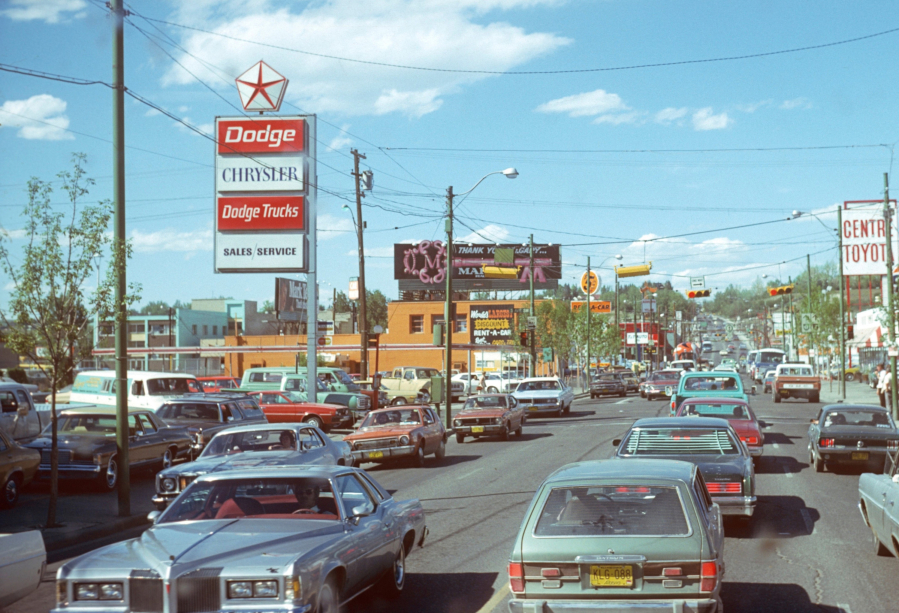SPOKANE — Suffice to say, the only reliable ad blockers you could get in the 1970s were to close your eyes, cover your ears or change the channel.
The pre-internet days of sellers trying to get consumers to buy their products were much less convoluted than present times, said Rick Hosmer, chief marketing officer with Spokane-based ad agency and web design firm Klündt Hosmer, what with print publications, radio, billboards, mailers and commercials across only so many television channels serving as the predominant forms of advertising to the American public.
Nowadays, Google search ads, personalized website display ads, web video advertising, ads across streaming services and sponsored social media posts are among the many forms of digital marketing that have shaped today’s advertising industry, said Hosmer, who helped form Klündt Hosmer in the mid- to late 1980s.
“It’s not like traditional media went away,” Hosmer said. “We still use all those, but now we have so many more platforms available for us to use. So I would say it’s more complicated now than it was then, but one thing that is really great now that we just couldn’t do then is being able to track the results of the ad.”
While the goals of ads remain unchanged, their methods to get consumers to buy certain products or services have certainly evolved since the 1970s.
At the forefront are digital personalized advertisements based on user data to target people in specific demographics based on a variety of factors, be it their location, their gender or interests.
Microtargeted advertising on a broad scale just wasn’t possible back in the ‘70s, said Mark Forehand, chair of the Department of Marketing at the University of Washington’s Foster School of Business.
“Instead of a one-size-fits-all that puts out this massive image of the brand, it becomes a very targeted message that sometimes is about the brand, but is often directly related to the behavior they’re trying to affect,” Forehand said.
Hosmer and Nico Archer, senior vice president at Spokane-based communications agency DH, said advertisers would be wise not to discount traditional forms of advertising despite digital’s prevalence.
Archer cited how targeted mailers have recently tested positively across the industry given that there’s “less noise and less competition” among mailings. That contrasts with the scores of emailed ads that exist today, which often get ignored by people thanks to spam or marketing filters.
“Any media can really be effective,” he said. “It’s about how you use it strategically to meet your audience.”
Ads glamorizing tobacco products have become relics because of tightened federal regulations and anti-smoking sentiments. Conversely, pharmaceutical and legal advertising became much more prevalent after a series of U.S. Supreme Court cases in the mid-1970s ruled in favor of protecting those under the First Amendment, according to the Freedom Forum Institute.
No matter the industry, businesses face a marketing hurdle that experts say was much easier to clear back in the 1970s: consumer opinion.
Consumers want their brands to be trustworthy, Archer said — a broad desire that demands ethical business practices, reliable customer service, responsibility with personal data and inclusivity.
“These are all things that, in the past, I think brands were less concerned about because the relationship with the consumer was more top-down,” he said. “In today’s world, the consumer has more voice than ever before.”
It’s common practice for businesses to attempt to use this discourse to boost their products.
Archer said businesses are on the lookout for user-generated content, or UGC, to share across social media of people enjoying their products. This also occurs more inorganically, with brands paying influencers, YouTubers and streamers to advertise for them.
Nevertheless, Hosmer said technology has made it so an advertiser has much less control over the messaging out there about their product, adding advertisers are subject to a greater degree of accountability given the readily available — and potentially loud — user feedback.
“(People) might see an ad that triggers them to think about an advertiser’s product, but then it’s super easy for them to go right on their phone to go look for reviews,” he said. “And now, they’ll be confronted with pages, potentially, of Google results where real people — not the company themselves — are able to talk about this product and give it a three-, four-, five-star rating.”
Advertisers and industry experts are keeping a close eye on how platforms, online data privacy and personal data usage regulations evolve in the future.
“A lot of that does lean into how willing people are to allow that to happen because you can block a lot of that out, but the younger generations tend to be much more open to everything being public,” Forehand said on how personal data is used with advertising. “My hunch is that as those younger generations age, you’re going to see more and more of that general hesitation towards being tracked and having people knowing what you’re up to — as that erodes, the ability to microtarget is only going to increase.”
For his part, Hosmer said he believes targeted advertising isn’t necessarily a bad thing.
“I may be bombarded with ads, but it’s likely to be things that I’m actually glad to see. I’m learning about something, or at least have the opportunity to learn about something, that I care about rather than things I don’t care about.”



